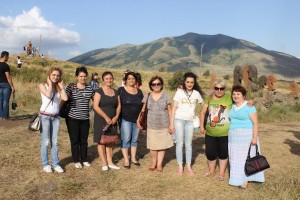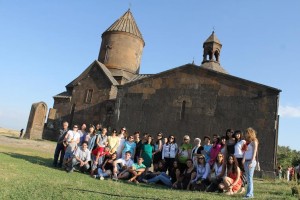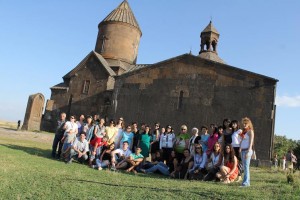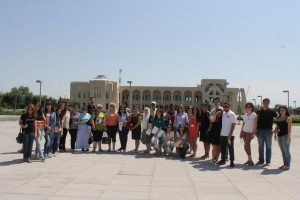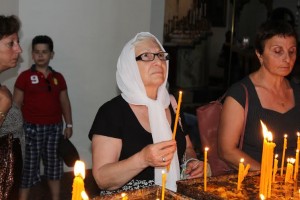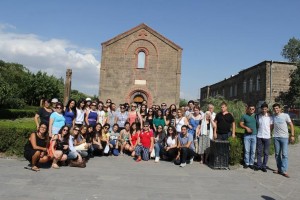Participants of 2015 “Diaspora” Summer School Program visited Etchmiadzin, Oshakan and Saghmosavank Monastery

Today was one of the most memorable and sentimental days in the lives of the participants of the 2015 “Diaspora” Summer School Program of the RA Ministry of Diaspora. On the way to Etchmiadzin, one could feel the power of faith that had somehow surrounded the teachers and the participants of the accelerated Armenian language course. Most of them had already been to the spiritual center of all Armenians, but they confessed that they feel different and have different impressions to share every time.
One of the teachers, Amalya Tadevosyan, felt the divine harmony of the universe at the Mother See. “I become purified here. I somehow merge with the church, become a part of all this and feel the presence of the Lord next to me and within me,” Tadevosyan mentioned. She compares herself with Armenian King Arshak II, who felt invincible on his own land.
Each of the participants was trying to presume himself and talk to God in the language to speak to God.
Diana Khanferyan from Rostov-na-Don agrees with the words of great writer Byron that the Armenian is truly the language to speak to God because there is so much love and harmony within the mother language that there could be no other way. After the Etchmiadzin, the teachers and the participants headed towards Oshakan, the sacred land where Mesrop Mashtots is buried. The teachers bowed their heads in front of the first teacher of the Armenian language, making it seem like they were received his blessing. As for the students, they promised to learn Armenian well and never forget it. They say he who doesn’t fulfill his promise to God shall be punished by the Lord. A baptism was taking place at the St. Mesrop Mashtots Church during the visit, and this wasn’t by chance. It was as if the participants reinterpreted it and were baptized as Armenian language students, and by students, we mean literally students because Koryun, Khorenatsi, Buzand and Parpetsi were also students.
After the trip to Oshakan, the participants headed towards the Garden of Letters situated on the eastern slope of Mount Aragats where they saw the sculptures of the 36 Armenian “soldiers” who were created so that we Armenians could exist as a nation and not assimilate. Each of the participants found the letter of his or her name and took a photo that would be binding and would serve as a reminder for them.
The next stop was Saghmosavank Monastery, a 13th century historical and cultural monument that is still unique due to its unique architectural solutions. It was also a center for scholastics. The participants lit candles, prayed and repented in the ancient monastery, became free of negativity and became filled with positivity.
On the way back, even though they were tired, they sang national and patriotic songs. They were even joined by the participants who didn’t know Armenian well. They all recited the poems of Sevak, Shiraz and Charents, shared heroic stories from Armenian history and became a part of the Armenian experience.
On the way back, Mount Ararat was clouded, but the peak was still visible and it seemed as though it was “hearing” the Armenian words and songs and was “at ease” for the future of the Armenian people.




 Արևելահայերեն
Արևելահայերեն Արևմտահայերեն
Արևմտահայերեն Русский
Русский